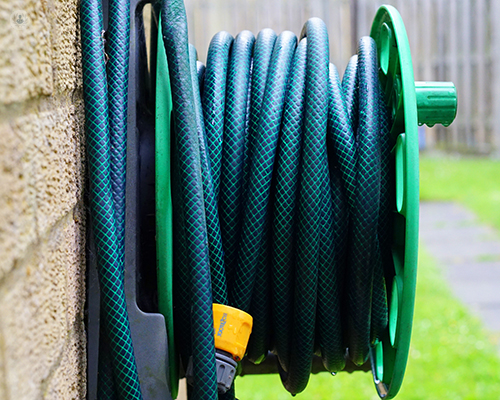Urethral stricture: Have you noticed your flow slow?
Autore:Urethral stricture is a condition where scarring narrows the urethra, the tube that carries urine out of the body. If it's left untreated, it can lead to serious problems. Leading London-based, professor of urology and consultant urological surgeon Professor Anthony Mundy answers the most common questions asked about the condition.

What exactly is a urethral stricture?
The urethra is the tube that urine passes through from the bladder to the outside world. There are various parts of the urethra. There is a lining membrane on the inside and a fairly elastic supporting connective tissue layer forming most of the substance of the tube around it. This supporting connective tissue is sufficiently flexible to be able to distend to allow urine out when the bladder is emptying but also to collapse when the control muscle within the connective tissue layer of the urethra, known as the urethral sphincter mechanism, tightens to hold urine in. This urethral sphincter mechanism is in the middle zone of the urethra in women and just below the apex of the prostate in men. A urethral stricture is when one or more parts of this tube become narrow causing difficulty in passing urine.
What causes urethral stricture?
A urethral stricture can develop for several reasons. By and large, it's extremely unusual in women, although you may have functional obstruction of the urethra which simulates stricture. A true stricture, in the absence of trauma, is rare in women.
In men, it's much more common albeit rare before puberty. Thereafter, in adult men, it is still unusual until about the age of 50. Thereafter it becomes increasingly common with age. Overall, it affects about 1% of men across the entire age spectrum but the vast majority are 60 and 70-year-olds.
The causes in men, other than those that are age-related, are usually a consequence of either trauma or infection. Nowadays, thanks to antibiotics, stricture due to infections such as gonorrhoea is much less common than it used to be. Even in the pre-antibiotic era, when it was not possible to give the appropriate treatment, one had to get gonorrhoea many times to be sure of getting a urethral stricture. It's just as unusual to get it nowadays from a single episode.
The extreme end of the spectrum of stricture disease is usually the result of major trauma either an injury to the bulbar urethra, the middle segment of the male urethra, which is a so-called “fall astride” injury. Sometimes the injury may be severe enough to actually sever the urethra. An injury might also be a result of a pelvic fracture-related injury, typically from a car crash or bike accident, which injures the urethra higher up towards the bladder, just below the prostate.
The vast majority of patients have a stricture for no apparent reason. In what's considered the developed world, the largest group of patients have a stricture that becomes apparent in their early 20s. It occurs precisely at the junction of the middle third and proximal third of the bulbar segment of the urethra, about two to four centimetres beyond the prostate and the urethral sphincter mechanism.
This occurs at such a specific site and age, that it's thought by some, including myself, that this is actually a congenital stricture meaning that the urethra has a small-calibre at birth, albeit normal for the baby’s size, and that as the child grows, the urethra doesn't and it just stays tight, becoming obstructive past puberty. That's the most common cause, called an idiopathic bulbar stricture.
The second most common overall is probably as a consequence of instrumentation when you get strictures, more typically in the penile segment of the urethra, as a result of catheterisation or a result of instrumentation, typically a cystoscopy.
What are the main symptoms of urethral stricture?
Most people just present with steadily increasing difficulty in voiding. The most common stricture, the idiopathic stricture, often doesn’t present any clear symptoms at all. Most people don't watch each other pee and so they are not aware of the slowing of their own stream and as it's possibly congenital they may have always had a slow stream.
It's only when in public, and a man stands at a urinal with somebody next to him that he notices that by the time he’s finished there may have been two or three people who’ve stood next to him and finished before him.
They might not know they are suffering from urethral stricture until it is severe or until they run into a complication. The commonest complication is urinary tract infection which can be recurring. Left untreated, a stricture may present with declining renal function as a result of the obstruction of the upper urinary tract and maybe even renal failure. These days, that's rather uncommon.
How exactly can this condition affect the urinary tract?
The urinary tract is affected either by infection or progressive upper tract obstruction. First, the bladder is affected as high pressure is generated when voiding. That pressure is transmitted upwards through to the kidney. The kidneys then need to work under high pressure to produce urine, which progressively leads to hydronephrosis and loss of renal function.
That's uncommon these days but that is what happens. It can sometimes happen due to a combination of outflow obstruction caused by stricture and prostatic obstruction as well as age-related reasons so there are two causes of obstruction rather than one and which just accelerates the whole process.
What is the most effective treatment for urethral stricture?
The most effective, in that it is most likely to be able to cure a patient, is urethroplasty but it is a major surgery that requires the correct hospital facilities and the skill set of a trained and experienced surgeon.
Until recently, it was usual to treat most patients by urethral dilatation. This involves the use of a metal instrument that is passed up the urethra to stretch up the site of the obstruction and, assuming the dilator would pass, that would take care of the stricture. Inevitably in most patients, it would need to be repeated. However, it could be done in an entirely outpatient setting with minimum equipment and with relatively little training and experience to be able to do it. For these reasons, it is still the most widely used procedure in the world. In between, there is minor surgery. The best example is what's called internal urethrotomy. Typically, with a cystoscope in the urethra, you see the stricture. Then with a little blade at the tip of the instrument, the stricture will be opened up and the obstruction removed. This procedure requires the correct hospital facilities and a degree of experience, putting it in between dilatation and urethroplasty.
If you are experiencing any of the above symptoms and suspect you may be experiencing urethral stricture, you may be interested in booking a consultation with Professor Anthony Mundy. You can book directly on his Top Doctors profile.


